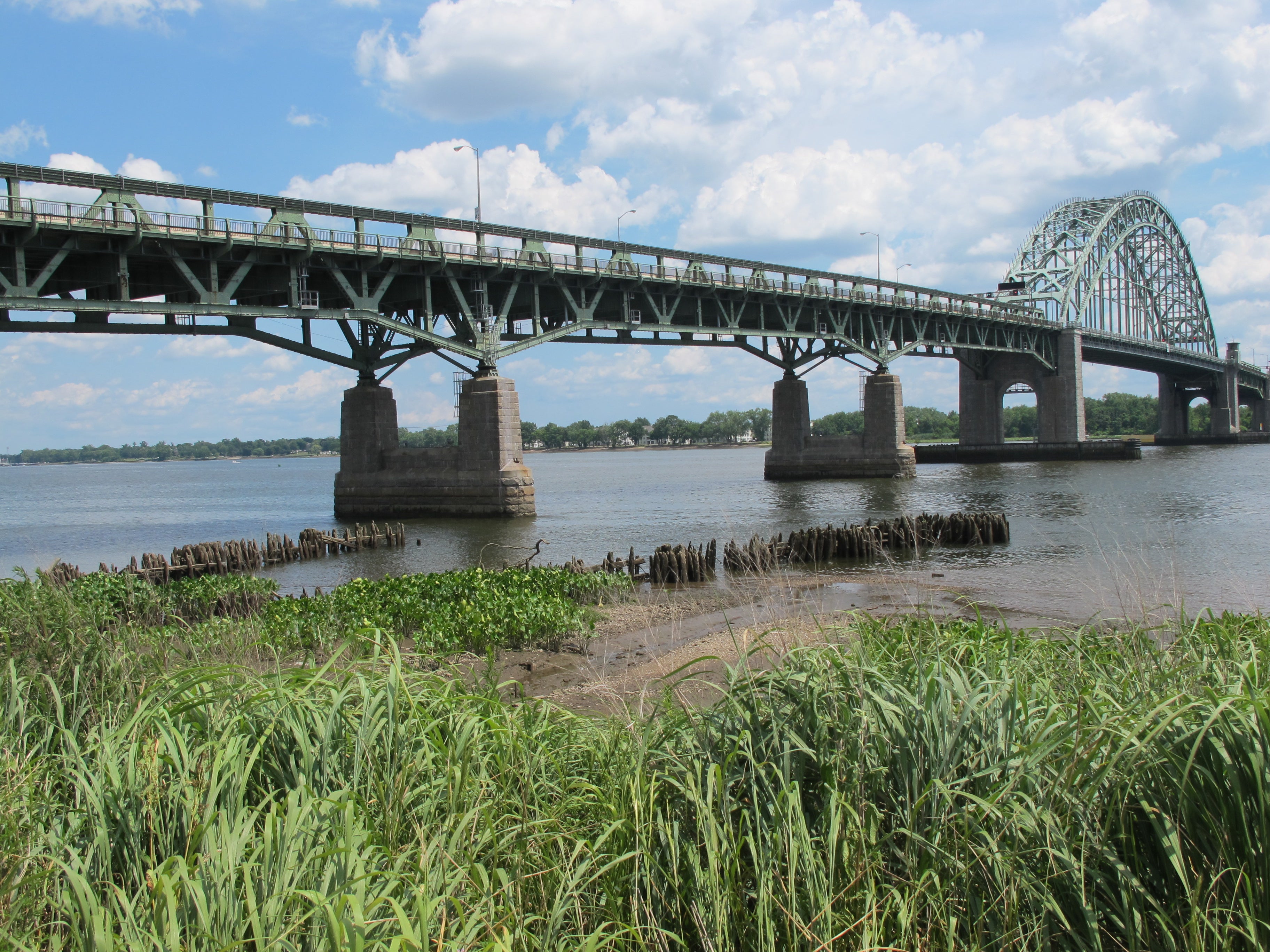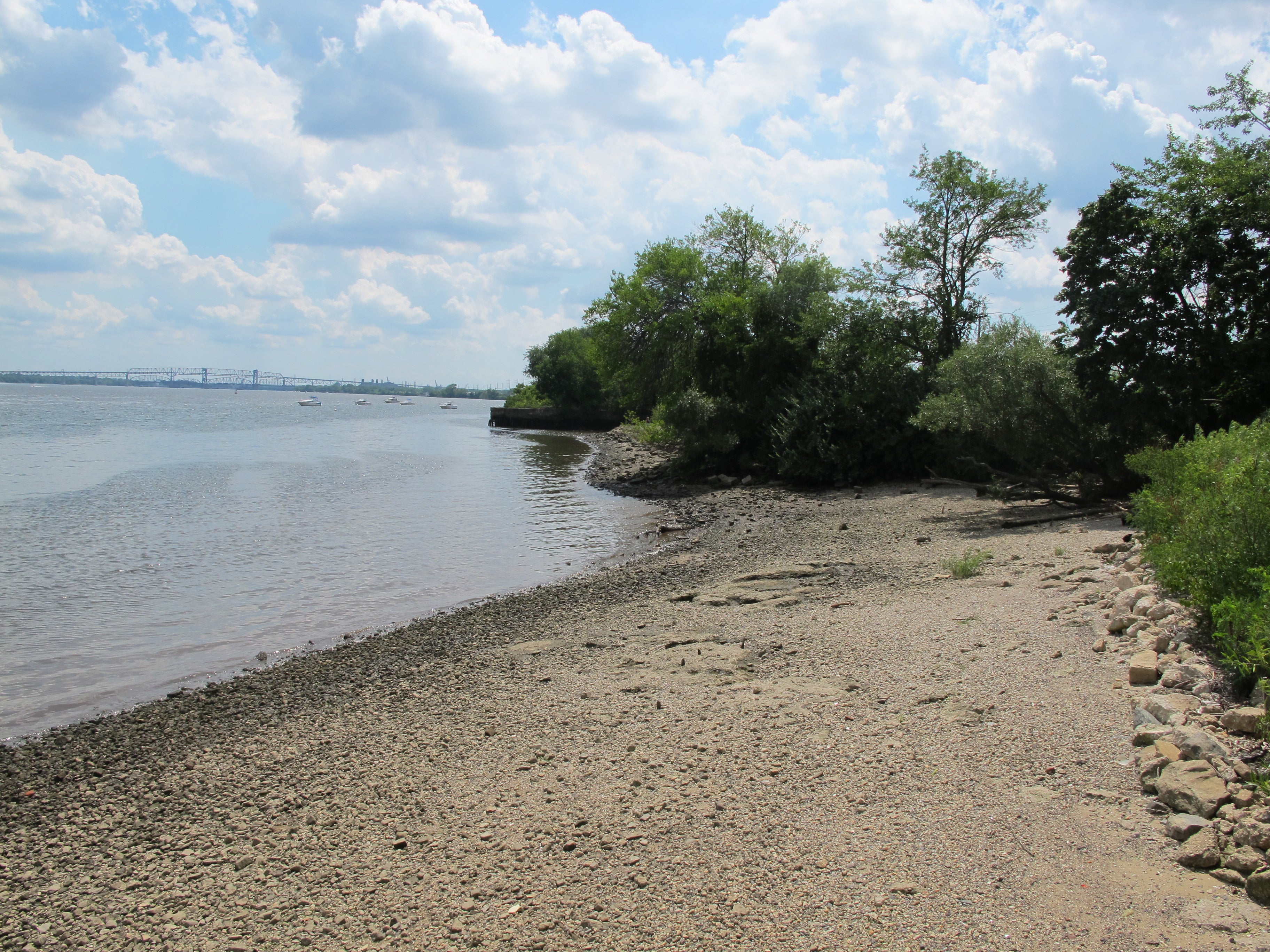Living shoreline at Lardner’s Point a model project

The shoreline at Lardner’s Point Park is tidy—kind of. The rows of willows on the slope leading away from the water are neatly maintained, and a manicured dirt path leads from the shore to the bike path above, but bleached branches and smatterings of human debris litter the short stretch of rocky sand, and plywood cages anchored in the sand try to protect shrimpy aquatic plants from the geese that ravage the area. Nevertheless, it has a hardiness to it; a sense that it could withstand a storm or two.
That is precisely the idea behind the riverfront at Lardner’s Point: It’s a ‘living shoreline’—one designed to support water and land habitats, provide easy community access to the Delaware River, and provide a more stable, durable shoreline in the face of flooding and storms.
Lardner’s Point Park is a project of the Delaware River City Corporation (DRCC) and Biohabitats, and was designed to be a community amenity in Tacony, with bike trails, picnic areas, and benches. But the shoreline was also deliberately designed, complete with sandy beach and local, non-invasive plants, improving the area for wildlife and increasing this spot’s ability to withstand natural disasters.
Through its flood-prepared communities project, The Pew Charitable Trusts is supporting projects like this. And at a tour last Tuesday it was clear that Pew sees Lardner’s Point as a successful model. Pew lauded the DRCC for its efforts to transform a portion of the hardened North Delaware into an accessible and sustainable shoreline.
Pew was there to drive excitement about the living shoreline at Lardner’s Point Park, one of Pennsylvania’s only living shoreline projects, in light of the possibility of a new nationwide living shorelines permit from the U.S. Army Corp of Engineers. The proposal would allow waterfront property owners to obtain permits to use native plants, sand, rocks, and other materials on the shoreline to stabilize banks and restore natural habitat.
The Corp is currently in the middle of a 60-day public comment period on the proposal, and Laura Lightbody, of the flood-prepared communities project at the Pew Charitable Trust, said she hopes people who appreciate the living shoreline at Lardner’s Point “would submit comment to the Corp to demonstrate support.”
Support for the revised Army Corps approach is important, says Lightbody, because a more business and people-friendly permit is essential in the face in the face of increasing flood disasters.
Of the 43 federal major disasters declared in the U.S. this year, 26 have been flood-related, highlighting the importance of finding new solutions to help a shorelines like this stretch of the Delaware, already 14% hardened by concrete structure, added Lightbody.
The living shoreline at Lardner’s Point has proved successful— wild celery, a plant that struggles to grow in polluted waters, has already thrived around the shoreline, a diversity of fish have been documented, and the coastal forest habitat surrounding the shore supports other wildlife. The shoreline has also proven a great resource for area groups, as programs like RiverGuides, a program for high school students, use the area to learn about environmental science.
Given the living shoreline’s success, the DRCC will look to implement the same tactics in other places along the Delaware in the coming years, according to the DRCC’s Jim Fries.
Those plans include the northern section of Lardner’s Point Park, and a possible site near Franklin Towne Charter High School, expanding the areas in which the Delaware is reclaimed and transformed.
WHYY is your source for fact-based, in-depth journalism and information. As a nonprofit organization, we rely on financial support from readers like you. Please give today.





